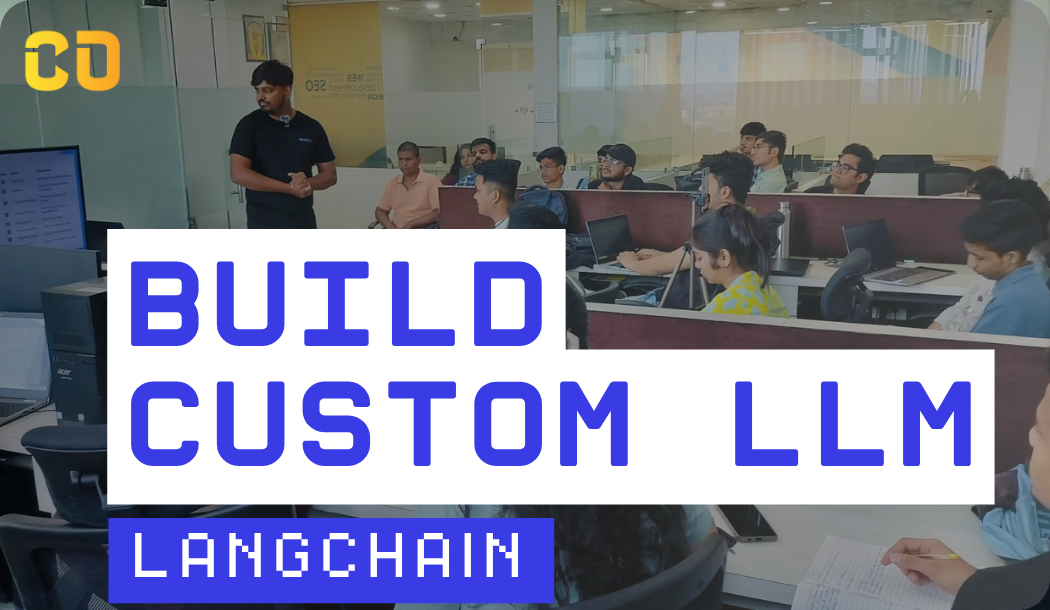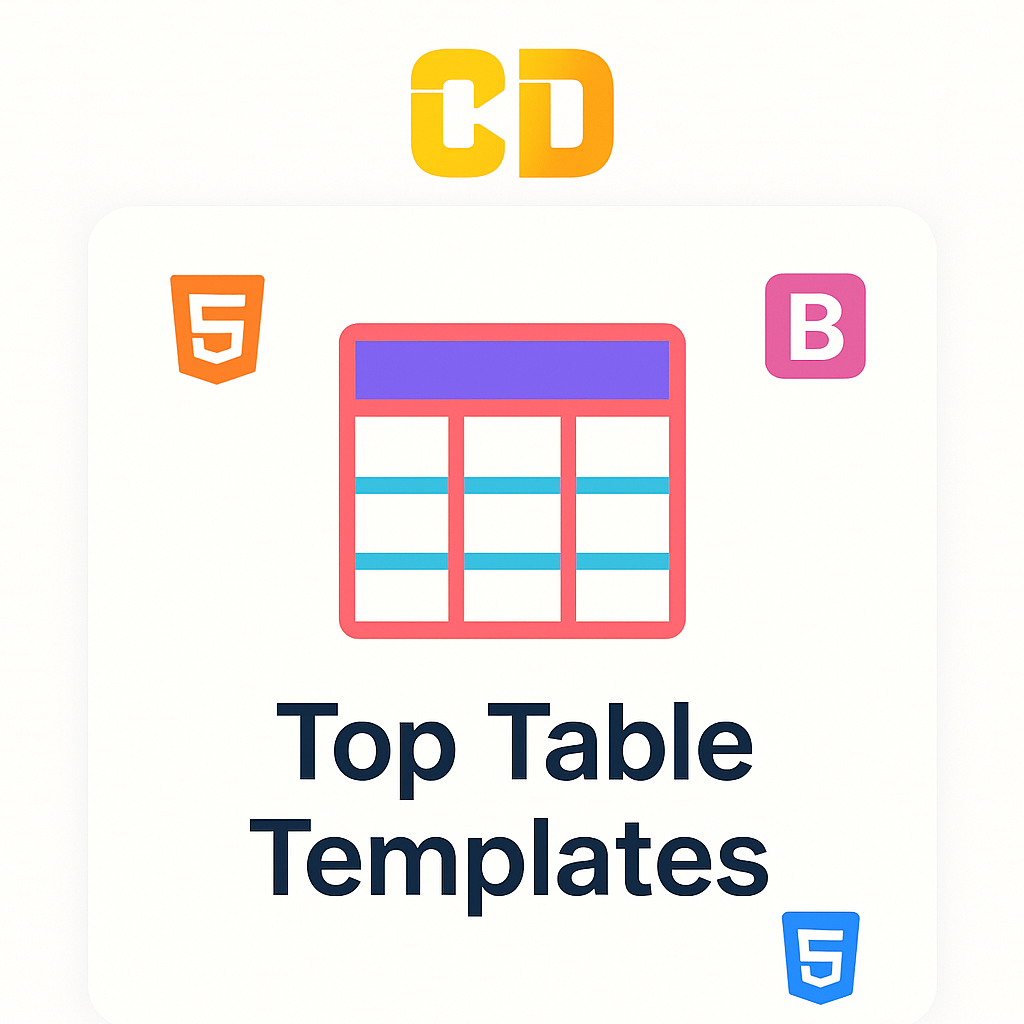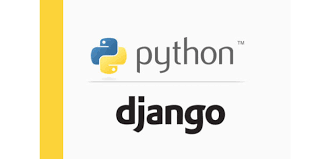Explore comprehensive TCS Full Stack Development Interview Questions and Answers to prepare for technical assessments and interviews. These questions cover a range of topics essential for full-stack developers, including front-end and back-end technologies.
Q1. What is virtual DOM?
Ans: The Virtual DOM (Document Object Model) is a concept used in the context of web development, particularly in frameworks like React.js. It's a programming concept and an abstraction that enhances the efficiency of updating the user interface (UI) in web applications.
Here's how the Virtual DOM works:
1. Real DOM:
- The Real DOM represents the actual structure of the web page. It's a tree-like structure of HTML elements, and any changes to the UI are reflected directly in the Real DOM.
- Manipulating the Real DOM is resource-intensive, especially when dealing with frequent updates or changes to a complex UI.
2. Virtual DOM:
- The Virtual DOM is a lightweight copy or representation of the Real DOM. It's a JavaScript object that mirrors the structure of the Real DOM.
- When there's a change in the UI, the update is first applied to the Virtual DOM rather than directly to the Real DOM.
3. Diffing Algorithm:
- After an update, a process called "reconciliation" or "diffing" takes place. This involves comparing the updated Virtual DOM with a previous version of the Virtual DOM (before the update).
- The algorithm identifies the differences or changes (diffs) between the old and new Virtual DOM.
3. Minimal Updates to Real DOM:
- Once the differences are identified, only the specific changes needed to update the Real DOM are calculated.
- This optimization significantly reduces the amount of manipulation required on the actual web page.
4. Efficient DOM Manipulation:
- Finally, the minimal set of changes is applied to the Real DOM, resulting in an efficient update of the user interface.
Advantages of Virtual DOM:
- Performance: By minimizing direct manipulations of the Real DOM, updates become more efficient and lead to better performance.
- Reactivity: The Virtual DOM enables a reactive paradigm where changes in the UI trigger updates in a more controlled and optimized manner.
- Abstraction: Developers can work with a simpler and more predictable representation of the DOM, making it easier to manage complex UIs.
Frameworks like React.js leverage the Virtual DOM to provide a more efficient and reactive way of building web applications.
Q2. Explain the difference between Real DOM and Virtual DOM.
Ans: The Real DOM (Document Object Model) and Virtual DOM are both concepts used in web development to manage and manipulate the structure of web pages. Here's a breakdown of the key differences between the Real DOM and Virtual DOM:
|
Characteristic |
Real DOM |
Virtual DOM |
|
Representation |
Actual structure of the web page (tree-like) |
Lightweight copy or representation |
|
|
|
(JavaScript object mirroring the DOM) |
|
Performance Implications |
Resource-intensive |
More efficient and optimized |
|
Rendering |
Synchronous |
Asynchronous |
|
Manipulation |
Direct manipulation using JavaScript methods |
Indirect manipulation through frameworks |
|
Workflow |
Changes trigger reflows and repaints |
Changes first applied to Virtual DOM, then updates Real DOM based on differences |
|
Creation |
Created by the browser parsing HTML |
Created and manipulated in memory |
|
Updates |
Direct updates lead to performance issues |
Optimized updates for better performance |
|
Usage |
Used directly by developers in JavaScript |
Often used through libraries/frameworks |
Q3. What is JSX?
Ans: JSX, which stands for JavaScript XML, is a syntax extension for JavaScript. It is commonly associated with React.js, a JavaScript library for building user interfaces. JSX allows developers to write HTML elements and components in a syntax similar to XML or HTML within JavaScript code.
Here are some key points about JSX:
1. Syntax:
- JSX looks similar to XML or HTML. It allows the mixing of HTML-like tags and structures directly within JavaScript code.
const element = <h1>Hello, JSX!</h1>;
2. Integration with JavaScript:
- JSX is not a separate templating language. It is a syntax extension that gets transformed into regular JavaScript by tools like Babel before being rendered in the browser.
3. JavaScript Expressions:
- JSX allows embedding JavaScript expressions within curly braces {}. This allows dynamic content to be included.
const name = "John";
const element = <h1>Hello, {name}!</h1>;
4. React Components:
- JSX is commonly used with React to define components. Components can be defined using JSX syntax, making the code more readable and expressing the UI in a declarative manner.
function Welcome(props) {
return <h1>Hello, {props.name}</h1>;
}
const element = <Welcome name="John" />;
5. Attributes and Props:
- JSX allows the use of attributes similar to HTML. Attributes are used to pass props (properties) to React components.
const element = <img src="image.jpg" alt="An example" />;
6. No Browser Dependency:
- JSX is not directly understood by browsers. It needs to be transpiled to standard JavaScript before it can be executed in the browser.
7. Readability and Expressiveness:
- JSX enhances the readability of code, especially when defining complex UI structures and components. It allows developers to express UI elements more intuitively.
JSX is a key feature of React.js, and many React developers find it a convenient and expressive way to define UI components.
Q4. How can you find a only missing number among the sequence numbers from 1 to n
Ans: To find the missing number in a sequence of numbers from 1 to n, you can use the following approach:
1. Calculate the Expected Sum:
- Find the expected sum of the sequence of numbers from 1 to n using the formula: expected_sum = n * (n + 1) / 2.
2. Calculate the Actual Sum:
- Calculate the actual sum of the given sequence.
3. Find the Missing Number:
- Subtract the actual sum from the expected sum. The result will be the missing number.
Here is a simple Python code example:
def find_missing_number(nums, n):
# Calculate the expected sum
expected_sum = n * (n + 1) // 2
# Calculate the actual sum
actual_sum = sum(nums)
# Find the missing number
missing_number = expected_sum - actual_sum
return missing_number
# Example usage
sequence = [1, 2, 3, 4, 6]
n = 6
result = find_missing_number(sequence, n)
print(f"The missing number is: {result}")
In this example, the sequence is [1, 2, 3, 4, 6], and the expected sum for the sequence from 1 to 6 is 21. The actual sum is 16, so the missing number is 21 - 16 = 5.
Q5. What is full stack development? What do full stack developers do?
Ans: Full Stack Development refers to the practice of working on both the front-end (client-side) and back-end (server-side) aspects of web development. A full stack developer is proficient in a wide range of technologies and frameworks, enabling them to handle various layers of a web application. The term "stack" refers to the combination of technologies used to create a complete web application.
Key Components of Full Stack Development:
1. Front-End (Client-Side):
- Technologies: HTML, CSS, JavaScript, Front-End Frameworks (e.g., React.js, Angular, Vue.js).
- Responsibilities: Designing and implementing user interfaces, handling user interactions, ensuring responsive and visually appealing web pages.
2. Back-End (Server-Side):
- Technologies: Server-Side Languages (e.g., Node.js, Python, Java, Ruby), Server Frameworks (e.g., Express, Django, Flask), Databases (SQL or NoSQL).
- Responsibilities: Implementing server logic, managing databases, handling server-side operations, building APIs for communication with the front-end.
3. Database Management:
- Technologies: SQL (e.g., MySQL, PostgreSQL), NoSQL (e.g., MongoDB).
- Responsibilities: Designing and maintaining databases, optimizing queries, ensuring data integrity.
3. Server Management and Deployment:
- Technologies: Web Servers (e.g., Apache, Nginx), Deployment Tools (e.g., Docker, Jenkins).
- Responsibilities: Configuring and managing servers, deploying applications, ensuring scalability and performance.
4. Version Control Systems:
- Technologies: Git.
- Responsibilities: Managing source code versions, collaborating with team members, tracking changes.
5. Development Tools and Libraries:
- Technologies: IDEs (e.g., Visual Studio Code, IntelliJ), Package Managers (e.g., npm, pip).
- Responsibilities: Using tools to enhance productivity, integrating third-party libraries.
What Full Stack Developers Do:
1. End-to-End Development:
- Full stack developers can handle the entire development process, from conceptualization to deployment.
2. Collaboration:
- Work collaboratively with cross-functional teams, including designers, front-end developers, and other specialists.
3. Problem Solving:
- Solve complex problems related to both front-end and back-end development.
4. Technology Stack Management:
- Manage and stay updated with a broad range of technologies within the development stack.
5. Scalability and Performance:
- Optimize applications for scalability and performance, ensuring a seamless user experience.
6. Project Management:
- Handle project management tasks, including version control, testing, and deployment.
Full stack developers are versatile professionals who can contribute to all aspects of a web application's development. They play a crucial role in creating robust and efficient solutions for various business needs.
Q6. Name a few full stack developer tools.
Ans: here are a few tools commonly used by Full Stack developers across different stages of development:
1. Text Editors/IDEs:
- Visual Studio Code: A lightweight, powerful code editor with support for various programming languages.
- Sublime Text: A versatile and fast text editor with a wide range of plugins.
2. Version Control:
- Git: A distributed version control system widely used for tracking changes in source code during software development.
3. Backend Frameworks:
- Node.js: A JavaScript runtime that enables server-side development using JavaScript.
- Express.js: A minimalist web application framework for Node.js.
- Django: A high-level Python web framework that encourages rapid development and clean, pragmatic design.
- Ruby on Rails: A web application framework written in Ruby that follows the Model-View-Controller (MVC) pattern.
4. Frontend Frameworks/Libraries:
- React.js: A JavaScript library for building user interfaces, developed by Facebook.
- Angular: A TypeScript-based web application framework maintained by Google.
- Vue.js: A progressive JavaScript framework for building user interfaces.
5. Databases:
- MongoDB: A NoSQL database that stores data in flexible, JSON-like documents.
- MySQL: A relational database management system.
- PostgreSQL: A powerful, open-source object-relational database system.
6. API Development:
- Postman: A collaboration platform for API development, allowing users to design, test, and document APIs.
- Swagger: A set of tools for API development, including an open-source framework to design, build, and document RESTful APIs.
7. Containerization and Orchestration:
- Docker: A platform for developing, shipping, and running applications in containers.
- Kubernetes: An open-source container orchestration platform for automating the deployment, scaling, and management of containerized applications.
8. Continuous Integration/Continuous Deployment (CI/CD):
- Jenkins: An open-source automation server for building, testing, and deploying code.
- Travis CI: A cloud-based CI service that integrates with GitHub repositories.
- CircleCI: A CI/CD platform that automates the software development process.
9. Cloud Services:
- Amazon Web Services (AWS): A comprehensive cloud computing platform.
- Microsoft Azure: A cloud computing service by Microsoft.
- Google Cloud Platform (GCP): A suite of cloud computing services offered by Google.
These tools vary in their use cases and preferences, and the choice often depends on the specific requirements of a project and the developer's familiarity with the tools
Q7. What is Inversion of Control and Dependency Injection?
Ans: Inversion of Control (IoC) and Dependency Injection (DI) are design patterns that help manage the flow of control and dependencies in software applications. Let's explore each concept:
Inversion of Control (IoC):
Definition: Inversion of Control is a design principle where the control flow of a program is inverted, meaning the control of the program is transferred to an external entity. In traditional programming, the flow of control is determined by the program itself, while in IoC, it is delegated to an external framework or container.
Key Concepts:
- External Control: The flow of control is dictated by an external framework or container, not by the application code itself.
- Decoupling: IoC promotes the decoupling of components, making the application more modular and easier to maintain.
- Hooks or Callbacks: The application provides hooks or callbacks to the framework, which the framework calls when certain events occur.
Example: A common example of IoC is event handling in graphical user interfaces (GUI). The GUI framework controls the flow of the application, and the application responds to events (e.g., button clicks) through event handlers.
Dependency Injection (DI):
Definition: Dependency Injection is a specific implementation of IoC that focuses on providing the dependencies that an object needs to operate. Instead of allowing an object to create its dependencies, those dependencies are "injected" into the object from an external source.
Key Concepts:
- Inversion of Dependency Creation: Instead of creating dependencies within a class or method, dependencies are provided from outside.
- Loose Coupling: DI promotes loose coupling between classes, making them more modular and easier to test.
- Constructor Injection, Setter Injection, Method Injection: DI can be implemented in various ways, such as injecting dependencies through a class's constructor, setter methods, or specific methods.
Example: Consider a class Car that depends on an instance of the Engine class. With dependency injection, the Engine instance is provided to the Car class from the outside, rather than being created within the Car class.
// Constructor Injection
class Car {
constructor(engine) {
this.engine = engine;
}
start() {
console.log('Car is starting with engine:', this.engine);
}
}
// Creating instances with dependency injection
const myEngine = new Engine();
const myCar = new Car(myEngine);
myCar.start();
In this example, Car doesn't create its own Engine but is provided one during instantiation.
Summary:
- IoC is a broader design principle where control flow is inverted, and external entities dictate the flow.
- DI is a specific implementation of IoC focused on providing dependencies from external sources.
- Benefits: Both IoC and DI contribute to more modular, maintainable, and testable code by promoting loose coupling and separation of concerns.
These patterns are commonly used in various frameworks and libraries, including those for web development, such as Spring (Java), Angular (JavaScript/TypeScript), and many others.
Q8. Explain Pair Programming.
Ans: Pair Programming is an agile software development technique where two programmers work together at one workstation. In this collaborative approach, the two programmers assume different roles—typically, a "driver" and an "observer" or "navigator." They switch roles frequently, maintaining effective communication throughout the process. Here's a breakdown of the key aspects of Pair Programming:
Roles:
1. Driver:
- The person actively writing the code.
- Focuses on the details of the implementation.
- Physically at the keyboard.
2. Observer/Navigator:
- The person reviewing each line of code as it's written.
- Keeps a broader perspective on the code being written.
- Offers feedback, suggests improvements, and thinks strategically.
Key Practices:
1. Frequent Role Switching:
- Driver and observer roles are frequently switched, typically every 15-30 minutes.
- Ensures both team members are actively engaged and contributing.
2. Continuous Communication:
- Constant communication between the pair is crucial.
- Discussing design decisions, code structure, and potential improvements.
- Helps in knowledge sharing and collaborative problem-solving.
3. Shared Responsibility:
- Both programmers share responsibility for the code.
- Collective code ownership encourages collaboration and a sense of joint accountability.
4. Knowledge Transfer:
- Facilitates knowledge transfer between team members.
- The observer learns from the driver's coding style, and both participants gain exposure to different approaches and problem-solving techniques.
5. Improved Code Quality:
- The constant feedback loop helps catch errors early.
- Encourages adherence to coding standards and best practices.
6. Increased Productivity:
- While it might seem counterintuitive to have two people working on the same task, Pair Programming often leads to higher productivity and faster problem-solving.
Benefits:
1. Quality Improvement:
- Fewer bugs and better code quality due to continuous reviews.
- Improved design decisions through collaborative thinking.
2. Knowledge Sharing:
- Team members gain a deeper understanding of the codebase and the problem domain.
- Knowledge is distributed across the team.
3. Enhanced Collaboration:
- Promotes collaboration and effective communication within the team.
- Encourages shared problem-solving and brainstorming.
4. Mentoring and Skill Development:
- Junior team members can learn from more experienced programmers.
- Provides a platform for mentoring and skill development.
5. Reduced Silo Effect:
- Breaks down knowledge silos by ensuring that multiple team members are familiar with different parts of the codebase.
Challenges:
1. Initial Resistance:
- Some developers may resist Pair Programming initially.
- It can be perceived as slowing down individual progress.
2. Fatigue:
- Pair Programming for extended periods may lead to fatigue.
- Regular breaks and role-switching help alleviate this.
3. Personality Dynamics:
- Pair Programming requires good interpersonal skills.
- Team members need to communicate effectively and be open to feedback.
Pair Programming is widely used in Agile and Extreme Programming (XP) methodologies, and it's considered a valuable practice for building high-quality software efficiently. The effectiveness of Pair Programming often depends on team dynamics and the specific context of the project.
Q9. What do you mean by Cross-Origin Resource Sharing (CORS)?
Ans: CORS stands for Cross-Origin Resource Sharing. It is a security feature implemented by web browsers to control how web pages on one domain can request and interact with resources hosted on another domain. In essence, CORS is a set of rules that determine whether a web browser allows a web page to make requests to a different domain than the one that served the web page.
The Same-Origin Policy is a security measure that prevents a web page from making requests to a different domain than the one that served the web page. While this policy enhances security, it can be too restrictive in modern web applications where resources are often hosted on different domains. CORS was introduced to relax these restrictions while still maintaining a level of security.
Here are the key points about CORS:
1. Cross-Origin Requests:
- A cross-origin request occurs when a web page from one domain makes a request to a server on a different domain (e.g., making an API request).
2. Same-Origin Policy:
- By default, web browsers enforce the Same-Origin Policy, which restricts cross-origin requests for security reasons.
3. CORS Headers:
- CORS introduces special HTTP headers that the server can include in its responses to indicate which origins are permitted to access the resources.
- Access-Control-Allow-Origin: Specifies which origins are allowed to access the resource. It can be a specific origin, a comma-separated list of origins, or the wildcard "*" (allowing any origin).
- Access-Control-Allow-Methods: Specifies the HTTP methods (e.g., GET, POST) that are allowed when accessing the resource.
- Access-Control-Allow-Headers: Specifies which HTTP headers are allowed when making the actual request.
- Access-Control-Allow-Credentials: Indicates whether the browser should include credentials (like cookies or HTTP authentication) in the actual request.
4. Simple Requests vs. Preflight Requests:
- Simple requests (e.g., GET, POST with certain content types) can be sent directly to the server with CORS headers.
- Preflight requests are sent for more complex requests (e.g., those with custom headers or certain content types). The browser first sends an HTTP OPTIONS request to check if the actual request is allowed.
5. Client-Side and Server-Side Implementation:
- On the client side, you may need to include the withCredentials property for requests that involve cookies or HTTP authentication.
- On the server side, you need to configure the server to include the appropriate CORS headers in its responses.
Example CORS Headers in a Server Response:
HTTP/1.1 200 OK
Access-Control-Allow-Origin: https://allowed-domain.com
Access-Control-Allow-Methods: GET, POST, PUT
Access-Control-Allow-Headers: Content-Type, Authorization
This example response allows cross-origin requests from https://allowed-domain.com, permits GET, POST, and PUT methods, and allows the Content-Type and Authorization headers.
CORS is a crucial aspect of building modern web applications that interact with APIs hosted on different domains. It helps strike a balance between security and flexibility when it comes to cross-origin requests.
Q10. What is Callback Hell?
Ans: Callback Hell, also known as "Pyramid of Doom," is a term used to describe a situation in asynchronous programming where multiple nested callback functions are used within one another, resulting in code that becomes hard to read and maintain. This typically occurs in languages like JavaScript, where callbacks are commonly used to handle asynchronous operations, such as reading files, making HTTP requests, or handling events.
Here's an example of what callback hell looks like in JavaScript:
asyncFunction1(arg1, (result1) => {
// Code inside asyncFunction1
asyncFunction2(result1, (result2) => {
// Code inside asyncFunction2
asyncFunction3(result2, (result3) => {
// Code inside asyncFunction3
// ... and so on
});
});
});
In this example, each callback is nested inside the previous one, creating a pyramid-like structure. As more asynchronous operations are added, the code indentation deepens, making the code difficult to read and understand.
Issues with Callback Hell:
1. Readability:
The code structure makes it hard to follow and understand, especially as the number of nested callbacks increases.
2. Error Handling:
Handling errors becomes challenging as each callback needs its error handling logic, resulting in duplicated error-handling code.
3. Maintainability:
Making changes or additions to the code becomes error-prone and can introduce bugs.
Solutions to Callback Hell:
1. Use Named Functions:
Define functions separately and then use them as callbacks. This helps improve readability and makes the code more modular.
function handleResult1(result1) {
// Code inside asyncFunction1
asyncFunction2(result1, handleResult2);
}
function handleResult2(result2) {
// Code inside asyncFunction2
asyncFunction3(result2, handleResult3);
}
// ...
2. Promises:
Promises are a more structured way to handle asynchronous operations. They provide a cleaner syntax and avoid the deep nesting seen in callback hell.
asyncFunction1(arg1)
.then(result1 => asyncFunction2(result1))
.then(result2 => asyncFunction3(result2))
.then(result3 => {
// Code inside asyncFunction3
})
.catch(error => {
// Handle errors
});
3. Async/Await:
Async/Await is a syntactic sugar built on top of promises. It provides a more sequential and readable way to write asynchronous code.
async function example() {
try {
const result1 = await asyncFunction1(arg1);
const result2 = await asyncFunction2(result1);
const result3 = await asyncFunction3(result2);
// Code inside asyncFunction3
} catch (error) {
// Handle errors
}
}
By adopting Promises or Async/Await and organizing code using named functions, developers can mitigate the issues associated with callback hell and create more readable and maintainable asynchronous code.








Add a comment: